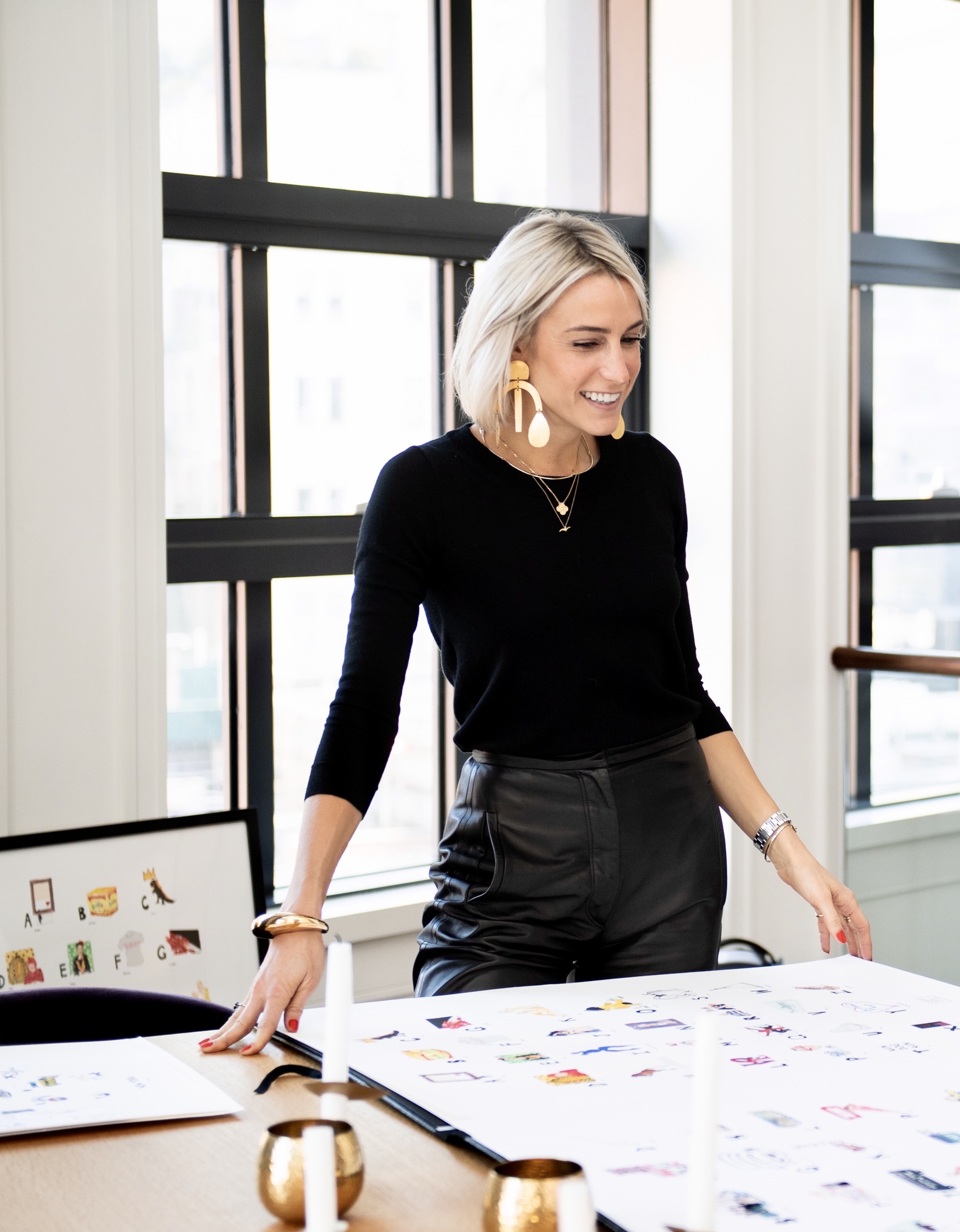
Lara Bjork
What’s your strategy for tackling a fair? How do you ensure you see everything you need to? The work that is done leading up to the fair is the most important, and we keep detailed client notes of works in progress during the year. Most of my clients prefer seeing art in the gallery, but Art Basel is the exception. Art fairs are about targeted viewings, while also leaving time to cruise. It’s a chance to discuss artists and see examples in person for future acquisitions and/or decisions about specific works.
There's always so much swirling during Miami, so I print out the fair map and make my nerd notes of artworks and gallery stops in advance for each client and each day. It's easy to get distracted; I do what I can so that we get things done and the clients have a good experience. Of course, the champagne helps takes the edge off, and my assistant, Charlotte, is a superstar.
Which artists are you speaking to your clients about these days? How did you discover their work? Each of my clients’ interests and collections are very uniquely their own. At the moment, we’re thinking about Nancy Grossman, Gina Beavers, Wayne Thiebaud, Richard Diebenkorn, and early to mid-career Chinese contemporary artists.
I'm constantly seeing, researching and discussing art, so the discovery may come from a conversation around another artist, or it may be something that I saw in the back of a gallery or something discovered at an auction, for example. One of my client’s collections is focused on the Bay Area and Bay Area Funk artists, so Wayne Thiebaud and Richard Diebenkorn are of particular interest at the moment. Another client's collection is focused on late-career feminist artists, which I love. Nancy Grossman is a fabulous example and her work is so skillfully done. I'm a total fan girl of her, and interested in this area of art myself, so it’s been really interesting to dive in.
When buying work at a fair, time is of the essence; how do you purchase art on a deadline and know you are going to love it tomorrow? More often than not, the works that are being acquired at a fair have already been discussed in advance and holds have been placed. However, of course we come across new works throughout our time, but I generally discourage impulse buying as cancelling sales is poor form and the collector/advisor/gallery relationship is important to maintain. However, if a quick decision is to be made, I ask for a short hold, if needed, to do some quick research and see a few other works in the meantime. If the excitement remains at the end of the hold or the end of the day, then I confirm the sale. Often one needs time to marinate before committing, especially in the art fair tornado—if anything, I try to buy a bit of time so that a sound decision can be made.
As an advisor, your role is partially of educator. What elements do you think are essential to cultivating a compelling collection? and whose do you admire? So much of what I do is educating. Building collections over a long period of time is so interesting, as one becomes more aware of their own eye and interest with the more art they see. This takes time to discover. A compelling collection to me is one that includes artists that are a little less obvious, but with sound backgrounds and historical reference. Collections that consist of just ticking the major Blue Chip Contemporary boxes, whilst impressive and expensive, can lack a certain soul or depth. A collection should be well rounded and consist of work that they bought because they love it, with a wide range of hitters, but that tells a story or has a connection to the collector on a deeper level. I admire those of my clients because they buy with their hearts and minds and not just their wallets and their Instagram accounts.
What is your favorite Miami Art Week story? The one where I come back as my own client. We can't say the story where the person got stabbed, can we?
For the love or the investment? I'm old school. For the love. I think there's an “eat pray love” quote out there that says something along the lines of, do what you love and the money will follow? That feels apropo. Yes, art is expensive and no, not the base of Maslow's Hierarchy's of Needs; however, buy what you love and you'll never feel stuck or sorry that you bought it. Bonus: that also doubles up as relationship advice. You can't go wrong with strong examples by great artists who are represented by solid galleries that support and help their progress, their practices and their careers.
When you are in Miami, where is your... Last supper? Anywhere surrounded by people that I love. Quiet place? My apartment. Drinking hole? Il Buco Alimentari in New York. ABMB is strictly bidness baby.
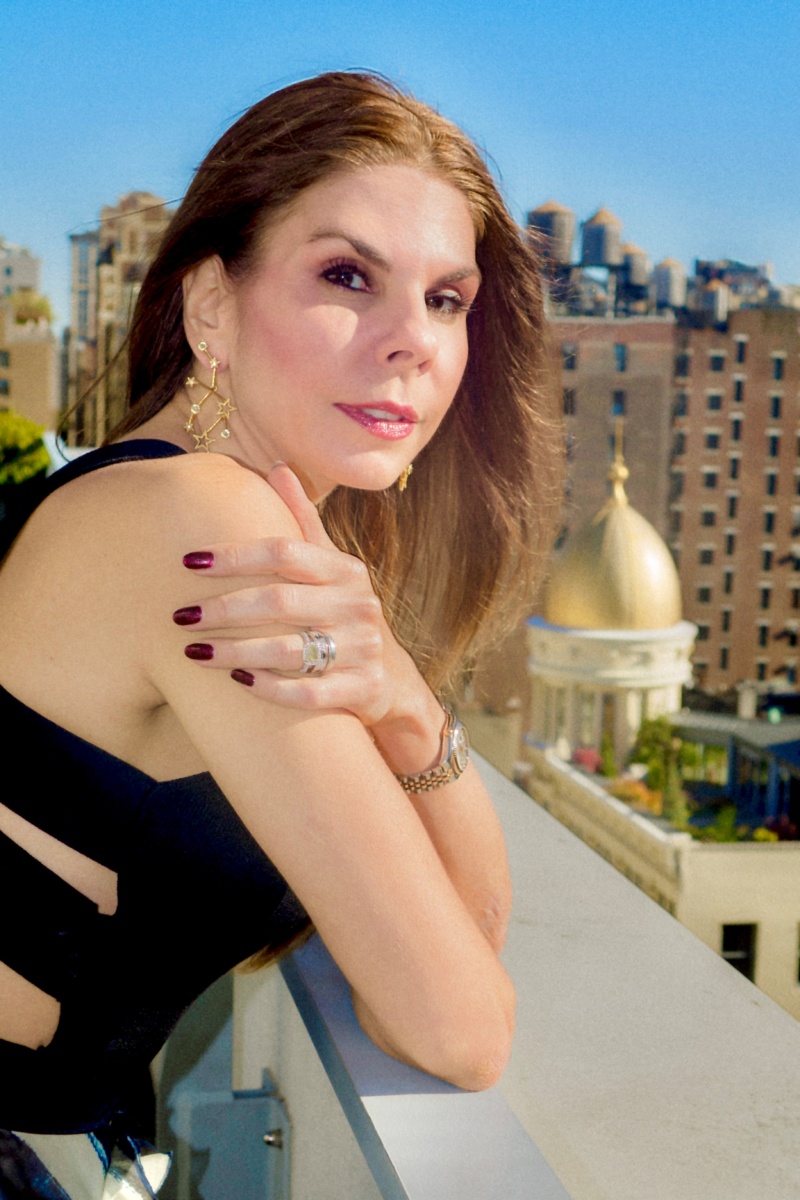 Maria Brito
Maria Brito
What’s your strategy for tackling a fair? How do you ensure you see everything you need to? In all these many, many years, I’ve almost learned the configurations of the fairs by heart. Lots of galleries keep the same booths at some fairs too, so that is easy. I really try always to do a second round, if possible, and usually with the smaller fairs that isn’t so hard. The Convention Center is another story.
Which artists are you speaking to your clients about these days? How did you discover their work? So many! Theresa Chromati, Allison Zuckerman, Jamea Richmond-Edwards, Shona McAndrew, Monica Kim Garza, Jonathan Chapline. I discovered them either through Instagram, young galleries, in off-the-beaten path museums or in emerging art fairs.
When buying work at a fair, time is of the essence; how do you purchase art on a deadline and know you are going to love it tomorrow? The thing is, there are too many previews, too many fairs and too many options. There needs to be a combination of really loving it, fair price and a bit of homework about the artist (the latter part has to happen as fast as possible, if the artist is completely new to my eyes.) But if the price is a bargain and the work is incredible, maybe we forget about the research part.
As an advisor, your role is partially to be an educator. What elements do you think are essential to cultivating a compelling collection? Whose collections do you admire? I think the most important thing is to arrive early to the party—to have the eye and the intuition to buy and support emerging artists when their prices are low and they want to grow. Collections with a strong point of view are the best: themes, cultural movements, genres. I love the collection of Dakis Joannou. The Rubells have also amassed an incredible one.
What is your favorite Miami Art Week myth? People who say they will spend the weekend of Art Basel in Miami, because “that’s when it’s all happening.” That’s when we are all leaving.
How would you characterize the Miami fairs? What are the stereotypes and what is actually true? The quality of the works is always high. Gallerists try to bring the best to Miami. The energy is intense and festive, but that doesn’t take away from the fact that we have to be focused to get the job done. Many people go to Miami to party during this time—the other half of us are working and, yes, sometimes partying too.
For the love or the investment? Both. It can’t be an either/or—that is an unfair proposition. We all want to buy what we love and we want to see it grow.
When you are in Miami, where is your… Last supper? It really changes every year. I can’t commit to one. Quiet place? The Four Seasons in Brickell Drinking hole? Any of the fair lounges where there is real champagne (not prosecco, for God’s sake!)
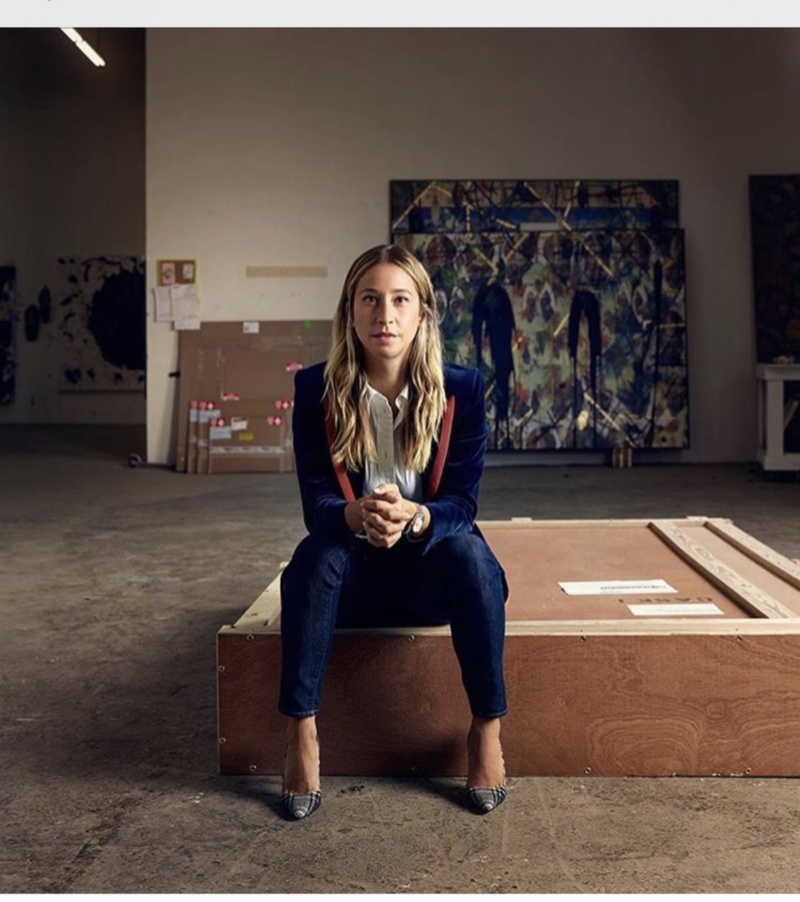
Meredith Darrow What’s your strategy for tackling a fair? How do you ensure you see everything you need to? I make sure to go through all the previews beforehand and map out the galleries where I need to see specific works, in order of priority. After that, I’ll traverse the aisles, making sure to see as much as possible.
Which artists are you speaking to your clients about these days? How did you discover their work? Many of my clients collect in depth, we’ve been focused on Ed Ruscha, Yoshitomo Nara, Richard Prince, Barbara Kruger, Glenn Ligon and Mark Grotjahn, amongst others, for quite some time now. In terms of younger artists I’m excited about Mathew Cerletty, Alex da Corte, Alvaro Barrington and Jamian Juliano-Villani. I discover artists by constantly looking: at fairs, at gallery shows, and by speaking to friends and colleagues I respect about who they’re seeing that’s new and exciting.
When buying work at a fair, time is of the essence; how do you purchase art on a deadline and know you are going to love it tomorrow? As I mentioned earlier, I try to study the previews and, if possible, see other works by the artists we’re considering before the fair, so that we have an educated sense of the quality of the work and its medium and we’re more equipped to make a quick decision on the spot.
As an advisor, your role is partially to be an educator. What elements do you think are essential to cultivating a compelling collection? Whose collections do you admire? My goal is to educate my clients, but also to work within their own personal aesthetic. If a client acquires something that is not only a great example of a work by an artist, but is also a good investment, they’ll only appreciate it more and want to collect more if they love living with it and it fits their personal taste. I, of course, admire Rosa de la Cruz’s collection. She’s committed to acquiring the best works of the time but by the artists she feels a personal connection and attraction to. Additionally, I’m biased as I’ve had the privilege of working with her to help build her collection for the past decade.
What is your favorite Miami Art Week myth? This is my seventeenth ABMB and I’ve seen the fair change quite a bit over the years. The week is always exciting and full of surprises. I wouldn’t say there is a myth associated with it, as really anything is possible!
How would you characterize the Miami fairs? What are the stereotypes and what is actually true? Miami Basel is an incredibly impressive art fair, second only, in my opinion, to Basel, Switzerland. The main fair hosts the world’s best galleries who bring great works. I love NADA for a younger fair; I always find interesting and cool younger artists there. Unfortunately, I tend not to have time to see much else, but love both those fairs!
For the love or the investment? It’s both as far as I’m concerned. It’s my job to find the marriage of those two elements for my clients.
When you are in Miami, where is your...
Last supper? Casa Tua. Quiet place? The ocean. Drinking hole? I have no idea what is cool these days—you should have asked me 5 years ago, lol. Anywhere with good tequila.
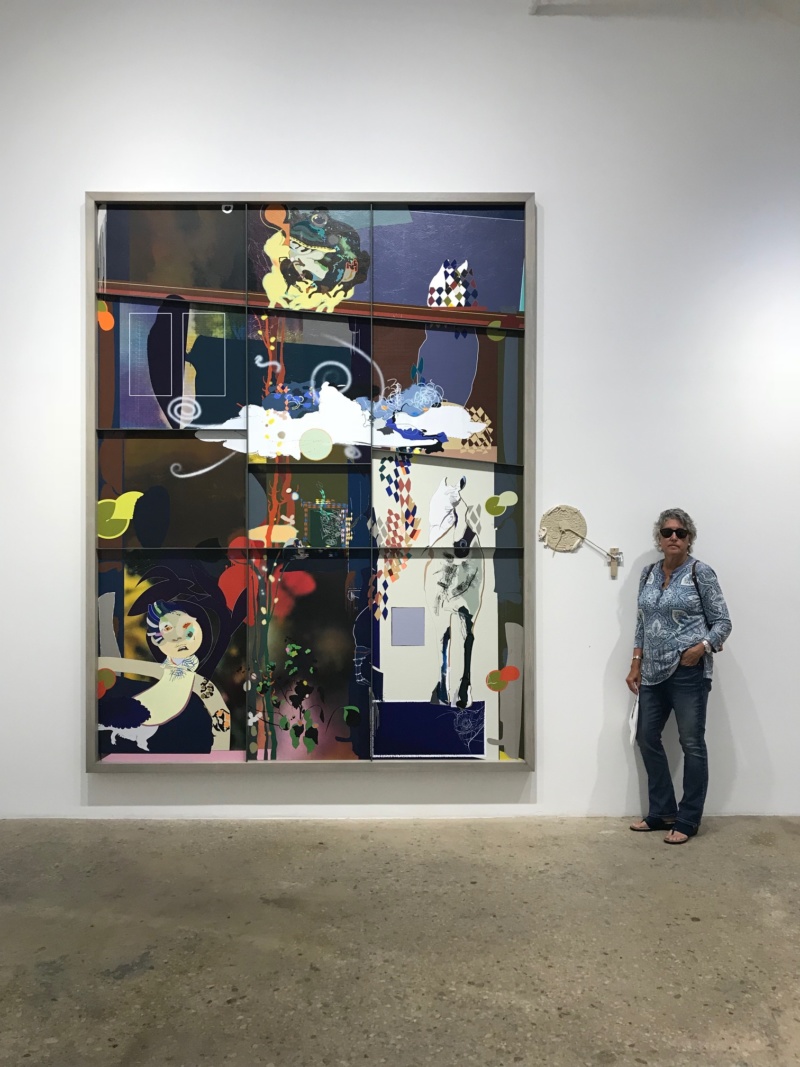
Cristina Delgado What’s your strategy for tackling a fair? How do you ensure you see everything you need to? It's impossible to really see everything in the first day. However, I receive previews from the galleries I'm interested in a week or so beforehand and reserve works accordingly, to view with my clients at the fair. Almost 99% of the time, we end up buying the reserved works. After I have visited all my favorite galleries, I try and see everything else.
Which artists are you speaking to your clients about these days? How did you discover their work? Artists that I believe will be historical artists or undervalued historical artists. I've been ahead of the curve almost my entire career, so what people today think is historical I was buying years ago—Seth Price, Aaron Flint Jamison, Sam Lewitt, Jean-Luc Moulene, Jutta Koether, Cory Arcangel, Dan Graham, Charline von Heyl, Michael Krebber, Jacqueline Humphries, Jonathan Lasker. I could go on. What’s amazing to me is the total disconnect between the "art market" and artists who are important today. It’s remarkable how few people actually know the difference, which is good for me because I don't have competition in getting the best works by these artists.
When buying work at a fair, time is of the essence; how do you purchase art on a deadline and know you are going to love it tomorrow? I don't buy unknown artists either for myself or for my clients at art fairs. Since I generally reserve works ahead of time, I try to respect the dealers by getting to those galleries first, so that I don't have anything on hold for too long. I don't subscribe to those that say "buy what you love" because, for new collectors, it's almost always a big mistake to buy what appeals to them. It's not necessarily about visual appeal and definitely not about decorative appeal; rather, it’s about a deeper intellectual engagement with the art in which one finds oneself discovering beauty and the sublime in work that a neophyte would dismiss as simple, messy and uninteresting.
As an advisor, your role is partially to be an educator. What elements do you think are essential to cultivating a compelling collection? Whose collections do you admire? A compelling collection can only be developed by a collector who is emotionally and intellectually engaged with their collection. No art advisor can develop that if the collector is not intimately involved. One can have really interesting and compelling art collections of artists who are not well known, or well known historically, but whose art has an interesting perspective or theme. The art historical value in developing that is more important than having "historical artists" in the collection. Again, that comes with a considered approach to buying and putting together a real "collection" in the old-fashioned sense; essentially, that means being educated enough to become a connoisseur and, frankly, there are very few of those around in contemporary art. Today, we see a vulgar display of acquiring art premised on what's hot. I'm not even certain those vulture collectors know what connoisseurship means. Again, it's amazing the disconnect between people who take the time to be educated and inquisitive and the average contemporary art collector who buys in bulk, with no engagement beyond the financial return on their investment or what appears to be selling well at auction.
What is your favorite Miami Art Week myth? That everything you see is good.
How would you characterize the Miami fairs? What are the stereotypes and what is actually true? I wish all the garish glam would wash away from ABMB. I think many good European collectors don't come anymore because of the party scene, while they still exhibit at Basel in Switerland, in June. Those dealers have more cerebral programs with art that is harder to place—they don't sell pretty pictures. Miami Basel became a zoo years ago and is getting worse: difficult to travel, traffic, too many events, dinners, one-off exhibitions and fairs. As a result, I think the Miami fair has lost some of its status, versus the Basel fair, which I personally think is a more serious and important fair. I know dealers bring their A game to Basel. Not sure it’s always A game in Miami.
For the love or the investment? I doubt many people buy art for the "love" of it anymore. They buy for the investment value. Think about the great American collectors of yesteryear. They were far wealthier than today's average contemporary art collector. The difference is that, back in the old days, no one's wealth was expected to come from art, whereas today, a lot of folks expect to grow their wealth through art. That's a huge difference.
When you are in Miami, where is your...
Last supper? I've recently moved to Miami full time. Nothing in Miami Beach—too far away. Quiet place? Fairchild Tropical Botanic Garden and Matheson Hammock Park. I love getting glimpses of old Miami from the ’20s–’50s. Drinking hole? Home or a friend's place.
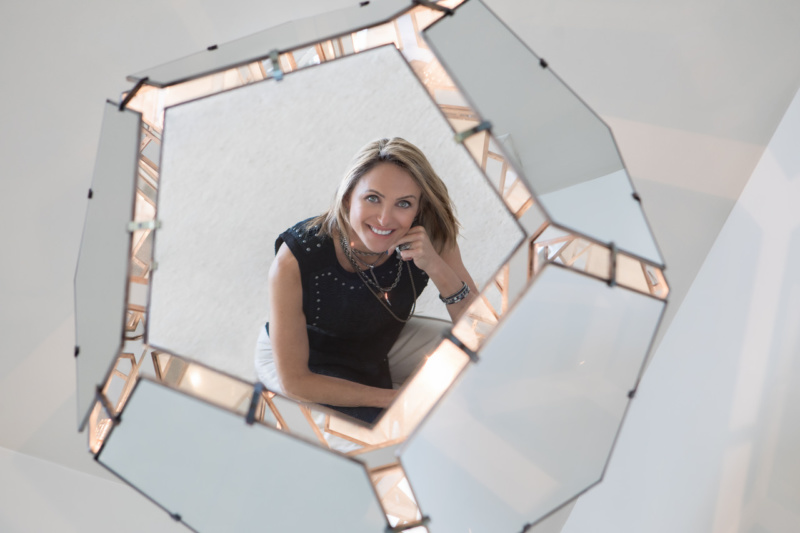
Monica Kalpakian What’s your strategy for tackling a fair? How do you ensure you see everything you need to? I am very strategic when it comes to Art Basel. Prior to the opening of the fair, I study the floor plan and map out the locations of the galleries and artists I want to see first. During the first hours of the fair, I am extremely focused on making my way through the busy hall to get to the various artists I am interested in purchasing. As the day wears on and I have taken care of business, I let myself wander down each lane in search of something new that strikes my curiosity.
Which artists are you speaking to your clients about these days? How did you discover their work? I usually don’t have artists I pitch to my clients, nor do I have one particular gallery. Each client is different and has different needs. Each has their own sense of aesthetics and budget.
Are there any works, presentations or shows that you are particularly excited to see? I started collecting design decades ago, for my personal home, so Design Miami/ is a place I enjoy.
When buying work at a fair, time is of the essence; how do you purchase art on a deadline and know you are going to love it tomorrow? There is a big factor besides knowledge, experience and knowing the key players: that is pure instinct. Instinct plays a key role when purchasing art within a short time frame. The book, Blink, by Malcom Gladwell, explains it well. We shouldn’t rely on snap judgments, but there is a sense of “knowing” that is derived from all of our experiences and all that we have read, seen and learned about throughout our lives; this gives us the foundation and courage to purchase on instinct.
As an advisor, your role is partially to be an educator. What elements do you think are essential to cultivating a compelling collection? Whose collections do you admire? I adore clients who are curious and want to understand what they like about a piece of art and why. I enjoy learning about their lives and discovering the reasons behind their interest in a particular piece. Do they identify with a feeling the artist is expressing or are they attracted by the beauty of the piece? Are they in search of an intellectual affinity with a piece, or maybe a conceptual thought? People collect for many different reasons and I make sure I understand what my clients are searching for and then find pieces that speak their language. A collection has to have a common thread, a story. It must take you in certain direction yet have coherence. If a collection was music, it would be a song composed of many notes.
What is your favorite Miami Art Week story? People from all over the world came to the inaugural Art Basel Miami Beach with great expectations. I was so excited to show off my city, and the show was cancelled.
How would you characterize the Miami fairs? What are the stereotypes and what is actually true? I tend to focus just on the main fair and on Design Miami/. I find the week to be overwhelming—too much of everything. Private collections are the jewels of the week.
For the love or the investment? Definitely for the love. I started collecting almost thirty years ago. I think it’s an “infectious” bug and it goes like this: to search, to find, to acquire and then to search again for something new, something different, something never seen before, something original. I first started collecting as a child. I started with a collection of Japanese erasers, then graduated to sterling silver boxes, miniature antique perfume bottles, frames, beaded antique bags and, eventually, to art. I never thought of collecting what I love as an investment. It was always just a great passion—a hobby that gave me joy. Collecting was just a way of living my life.
When you are in Miami, where is your...
Quiet place? My home, surrounded by beautiful, meaningful art, a pile of all the books that I want to read at once, music that my soul sings and views of the magical Miami sunsets. Drinking hole? On a friend’s boat, at night under the stars.
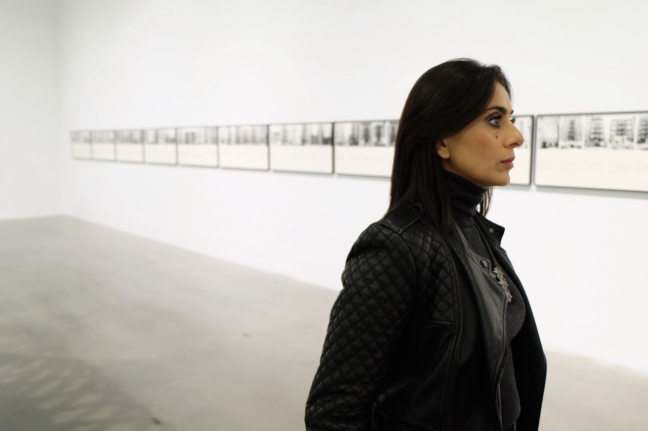
Nazy Nazhand What’s your strategy for tackling a fair? How do you ensure you see everything you need to? I don't have a single strategy, but after many years attending art fairs around the world as a journalist, gallerist and now as an independent art consultant, I have certain rituals and unofficial rules that serve me well and keep me inspired.
I review the booth previews ahead of time, arrive early on opening day and stay mostly on my own. I head to my targeted gallery booths first and I take LOTS of pictures and notes on my phone. Art fairs are a dynamic and social environment, so it's also important for me to allow for flexibility in my agenda for meeting new galleries, discovering new artists and, of course, impromptu meetings in the VIP lounge.
Which artists are you speaking to your clients about these days? How did you discover their work? I've dedicated my entire career to supporting artists from emerging regions (the Middle East and Central America) and focusing on powerful female artists. I'm proud to say that the artists I championed very early on—Ahmad Mater, Leslie Hewitt, Huma Bhabha, Simón Vega, Siah Armajani, Ali Banisadr, Diana Al-Hadid—are all considered to be among the best artists working today and have strong institutional support. So please listen to me and buy artists early on, even if you haven't heard their names....yet!
What is your favorite Miami Art Week myth or failure? How would you characterize the Miami fairs? What are the stereotypes and what is actually true? In my opinion, Miami Art Week (as we know it now) has become a hybrid art fair, fashion week and music conference—and one of the most fascinating social experiments as far as I’m concerned. And whatever the failures and stereotypes may be, everyone, myself included, keeps coming back year after year!
For the love or the investment? The profound contribution of artists to our society, centuries of art history and patronage and the complex ecosystem of visual arts should never be reduced to such oversimplification.
When you are in Miami, where is your...
Last supper? The last few years it’s been early supper at Soho Beach House before I rush out to catch my flight back to New York. Quiet place? Morning runs by the ocean are the best. Drinking hole? Given the nightly dinners and parties all week, I don’t need additional places to go drinking! But I have to say cocktails at the stunning home of my long-time friends Mario Cader-Frech and Robert Wennett are an absolute treat.
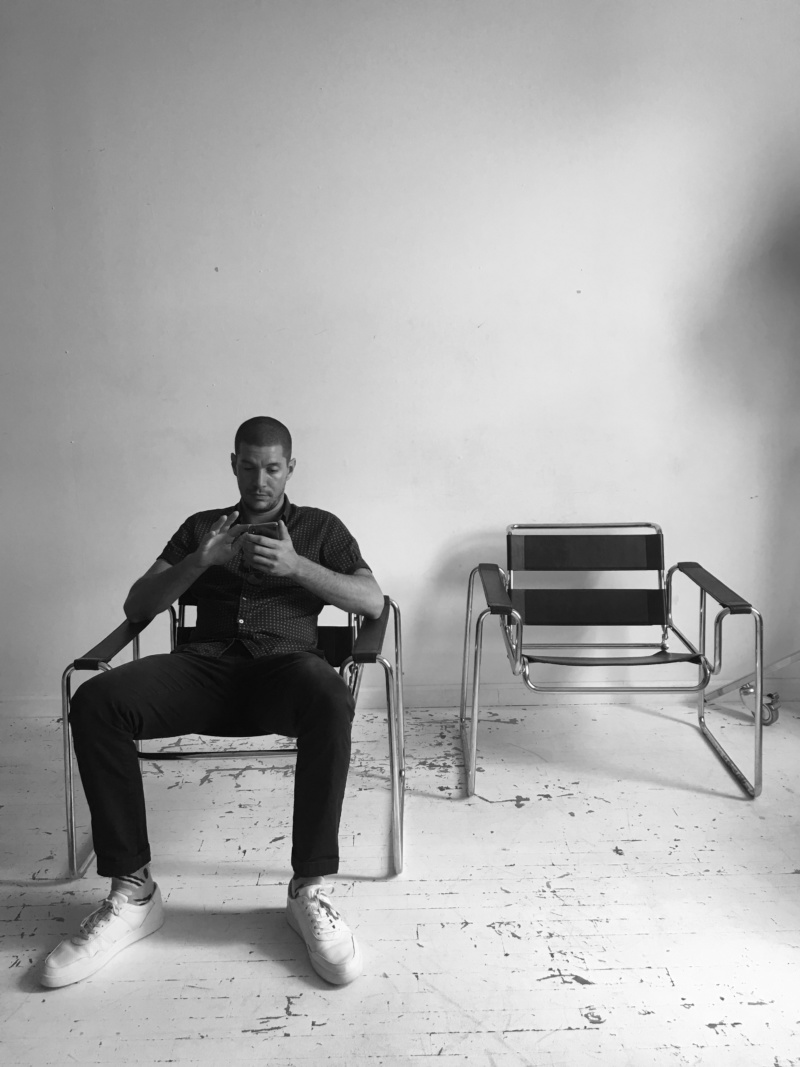
Dan Oglander What’s your strategy for tackling a fair? How do you ensure you see everything you need to? My great grandfather used to say "If you want to tell the universe a joke, make a plan." However, I do my best to counteract that truism with an itinerary. Usually I spend the week before picking and choosing what will be most educational. Then I lump in a bunch of meetings, dinners and the occasional party. Finally, it all goes in the ol’ calendar with reminders set 2 hours before each event. Usually, this all falls apart after the first day and I just go with the flow. Your elders know best.
Which artists are you speaking to your clients about these days? How did you discover their work? It really depends who I'm dealing with, as each client has a different taste and budget. A few artists I have been guiding my clients towards are Kon Trubkovich, Huma Bhabha, Alex Da Corte, Peter Saul, Cory Arcangel and Henry Taylor, to name a few. I most likely discovered all of these artist during my time as an art handler at Phillips De Pury. That's where I cut my teeth.
When buying works at a fair, time is of the essence; how do you purchase art on a deadline and know you are going to love it tomorrow? Once again, it depends on the client. Unless my buyer already owns work from the particular artist we are after, I don't want them rushing into anything. I can't guarantee you'll love it ten years from now, but the day after purchase my clients are usually still feeling lustful.
As an advisor, your role is partially to be an educator. What elements do you think are essential to cultivating a compelling collection? Whose collections do you admire? Do your research! I can only stuff so much information down your throat. Great collections are a byproduct of education, which leads to passion, bordering sometimes on addiction. Go to museums and galleries, read books, talk to curators, dealers and other collectors. One shouldn't shy away from discomfort—rather, embrace it. People usually only like what they know. Know more, buy better. Collections I admire, in no particular order: Sammlung Boros, Frederick R. Weisman, Frick, Tom Hill, Peter Brant.
What is your favorite Miami Art Week legend or failure? Remember when that poor girl was attacked and stabbed in the neck by a crazy person and everyone thought it was a performance? Failure.
How would you characterize the Miami fairs? What are the stereotypes and what is actually true? Vast and overwhelming. I don't know what the stereotypes are, but I'm sure they are true. It seems like the only truth we have these days is art itself.
For the love or the investment? Love, of course! But any collector who tells you they aren't at all interested in the future value of their art is lying through their teeth.
When you are in Miami, where is your...
Last supper? I mean...It’s gotta be Joe’s Stone Crab right? Quiet place? My hotel, and only when I'm asleep. Drinking hole? Perhaps the greatest dive bar in America: The Deuce.
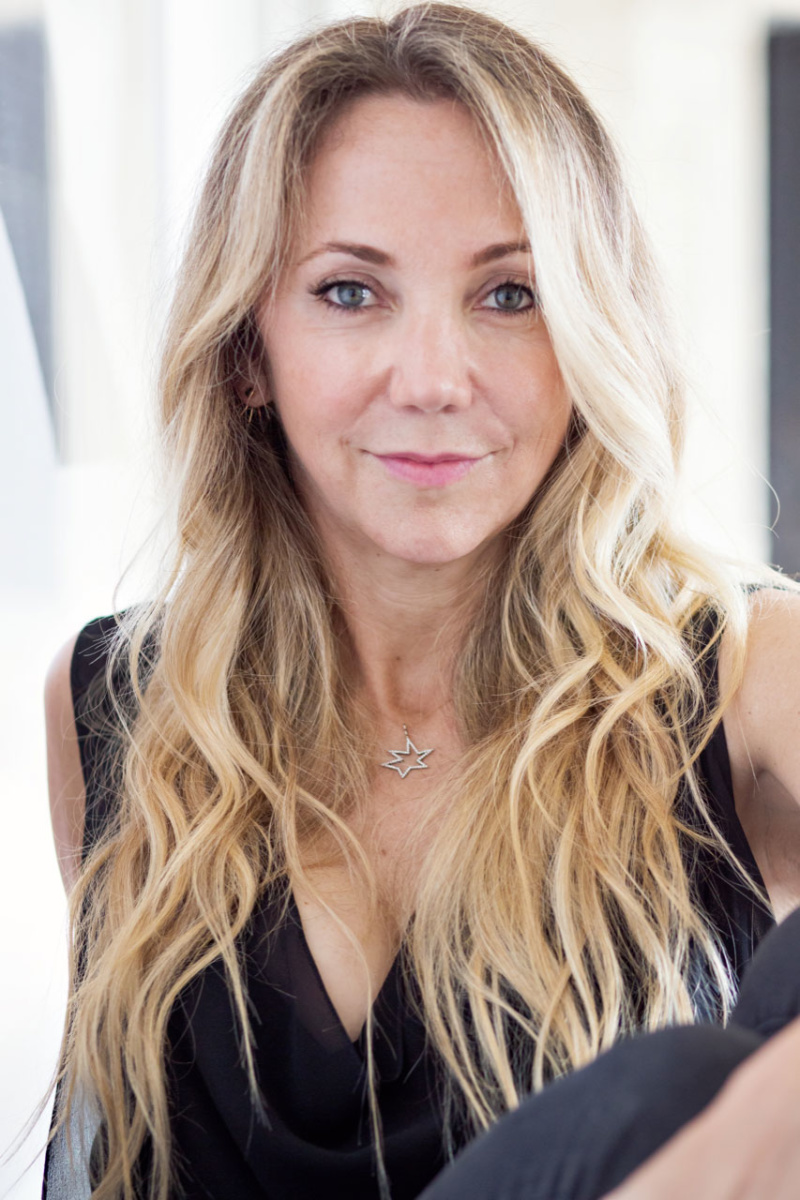
Lisa Schiff What’s your strategy for tackling a fair? How do you ensure you see everything you need to? I go through every single preview from every fair, then we cull things we like, or that we know our clients like, and we build decks so the images can be digested in a seamless manner. These are all presented uniformly to our clients so that they don’t have to try to do the previews one at a time—it’s impossible for them. It’s almost impossible for me. It takes a ton of time.
Which artists are you speaking to your clients about these days? How did you discover their work? Ivy Haldeman—Valeria Napoleone suggested I look and I listened. Kelly Akashi—discovered at LA’s Francois Ghebaly at Art Basel Hong Kong, of all places. Alex da Corte—Brendan Dugan from Karma took me to his studio and I am a believer! Maria Berrio—fell in love with the work in a summer group show at Victoria Miro. Mika Tajima—The Sculpture Center, where I sit on the board, did an exhibition with her. Sam McKinnis—Team Gallery first introduced me to him. Parker Ito—Chatteau Shatto. Elaine Cameron Weir—Hannah Hoffmann insisted I look and I have not stopped buying her work.
When buying work at a fair, time is of the essence; how do you purchase art on a deadline and know you are going to love it tomorrow? The urgency of a fair is great for the galleries but it’s not always prudent for collectors, who get caught up in the frenzy. I recommend that new collectors do not come to Miami until they have real knowledge under their belts, or they will either be turned off by the palpability of the market or make bad decisions under the gun.
As an advisor, your role is partially to be an educator. What elements do you think are essential to cultivating a compelling collection? Whose collections do you admire? Collectors have to be confident; they hold all the cards in terms of having an impact on both the market, but, more importantly, pushing the critical curatorial conversations forward. We always look at three things before buying: 1. Is it visually and/or conceptually compelling? 2. Is it historically relevant? 3. Is it strategically placed? There are so many collections I admire; obviously, some are the ones I have assisted in building, such as Candace Carmel Barasch, but, outside of that, I admire Valeria Napoleone, Patrizia Sandretto re Rebaudengo and Pamela Joyner.
What is your favorite Miami Art Week myth? Maybe the stories about people getting dressed up as art handlers to try to sneak into the fair early.
How would you characterize the Miami fairs? What are the stereotypes and what is actually true? First, the Miami fairs are always defined, for me, by my birthday. I was born and raised in Miami and my birthday—December 2—always falls during ABMB, which is great because I don’t have any friends outside of the art world and everyone is here to celebrate with me. Second, I think there’s an intensity to partying in Miami that is greater than that of any other fair week. The sun, the end of year and all the great parties lead to a bit of excessive indulgence. It’s always fun, but we also need to focus on our real job and not get too caught up in the frenzy.
For the love or the investment? It has to be both; these are not mutually exclusive. Anyone who says that they don’t care about the investment is lying or misspeaking. There is a difference between caring about the safety of your investment versus planning for a short term flip. The question should really be, “For love or for speculation?” It’s not a bad thing to care about the investment, as long as you also care about criticality and understand that building a collection with some critical investments alongside some more commercial ones can result in an overall collection of greater value. Held value is always higher and better than transacted value.
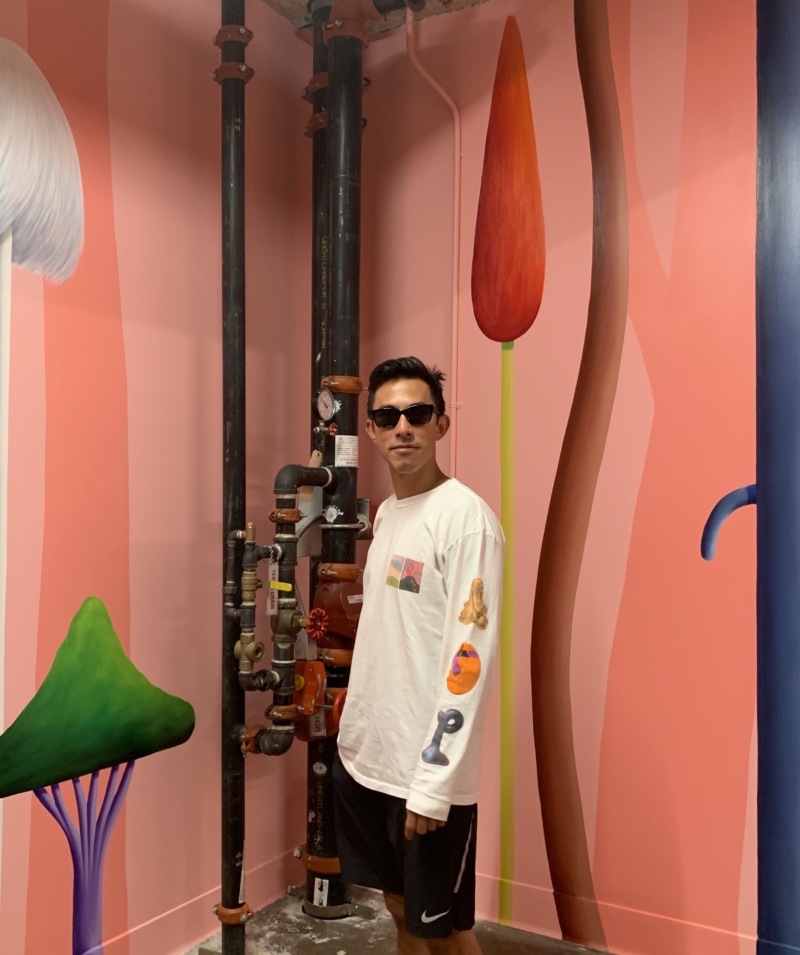 Ed Tang What’s your strategy for tackling a fair? How do you ensure you see everything you need to? Do some homework before the fair and prioritize which booths you want to start off with. Keep walking and looking till you can’t anymore. Make sure your phone is fully charged as well!
Ed Tang What’s your strategy for tackling a fair? How do you ensure you see everything you need to? Do some homework before the fair and prioritize which booths you want to start off with. Keep walking and looking till you can’t anymore. Make sure your phone is fully charged as well!
Which artists are you speaking to your clients about these days? How did you discover their work? It’s quite a wide range—anyone from Agnes Martin to Matthew Wong. Recently a friend took me to Salman Toor’s studio. He will have a show at the Whitney next Spring. I’m very excited about his work.
When buying work at a fair, time is of the essence; how do you purchase art on a deadline and know you are going to love it tomorrow? When in doubt, ask to put the work on hold. I’d rather miss out on something than regret buying a work I don’t love.
As an advisor, your role is partially to be an educator. What elements do you think are essential to cultivating a compelling collection? Whose collections do you admire? I have been fortunate enough to have great mentors/friends in the art world and I’ve learned that there are many ways to build a compelling collection. If there is one essential element, I’d say it is to be inquisitive—Joel Wachs taught me that and he has a collection that I absolutely love.
What is your favorite Miami Art Week myth? “One more drink at night won’t hurt”—total myth!
How would you characterize the Miami fairs? What are the stereotypes and what is actually true? Miami Art Week is not all about fun and fairs. There are many opportunities to discover new things, meet exciting people and engage in serious conversations and business.
When you are in Miami, where is your...
Last supper? If not Versailles, it’s usually the Cuban Cafe at the Miami Airport, near Gate 30 I think! Quiet place? The spa at the Setai. Drinking hole? Coconut water on the beach.




